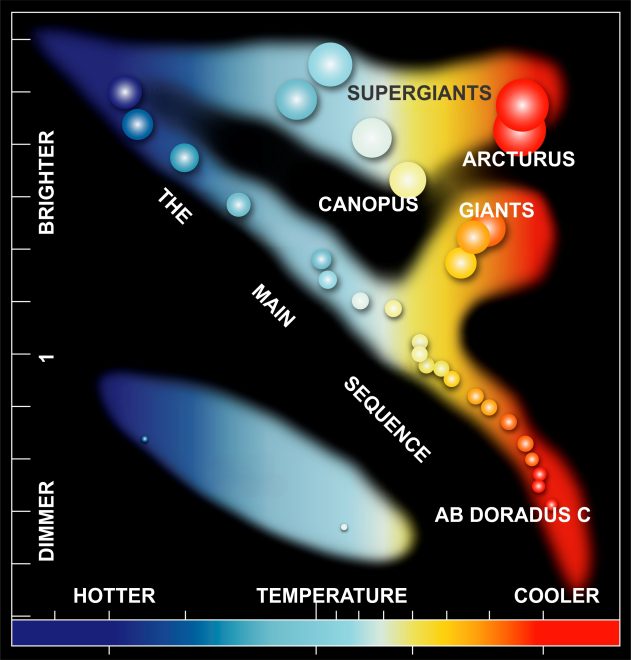The color of stars
Published 10:30 am Thursday, June 5, 2025

- DIAGRAM OF THE DIFFERENT STARS: The Hertzsprung-Russel Diagram of star color and temperature. Courtesy of the European Space Agency and modified by the column author.
The color of stars has been noted from antiquity and the names of many stars reflect their visible color. The red Antares is the heart of the scorpion. The brightest star Sirius is derived from the word scorcher.
By 1910, the distance to many stars was known. When the distance is known, and how bright they appear is measured, the absolute brightness can be calculated. About that time, the Danish astronomer Ejnar Hertzsprung, and the American Henry Russel independently began plotting the brightness of stars versus their color on a diagram. The format of the Hertzsprung-Russel (HR) diagram has evolved over the years, but the principle is the same.
This is a simplified HR Diagram published by the European Space Agency (ESO) and simplified further by yours truly. Each circle represents a known star. Today thousands of stars have been plotted on an HR Diagram.
The HR Diagram was developed before scientists understood the Sun’s energy was released by fusion. Fusion is different than fire. Fire rearranges atoms while fusion changes atoms, releasing vastly more energy.
Cooler stars are plotted farther right. Brighter stars are plotted higher up. Notice that the stars are not scattered everywhere in the diagram, but rather are grouped in certain areas. The HR Diagram grouping of stars suggested to scientists a pathway to understanding the life and evolution of stars.
The Main Sequence stretches diagonally from the upper left to the lower right. Stars change with time, but all stars spend most of their life on the Main Sequence. These stars are fusing the simplest atom, hydrogen. The stars that were born small fuse slowly and live very long lives, lasting essentially forever. They are cooler and red like the star AB Doradus C. Stars born large fuse rapidly. They are hot, blue, and live short lives, only millions of years. Our Sun is average size and temperature. It is about 4.7 billion years old and is in mid-life.
How stars die also depends on their birth size. Larger stars eventually become supergiants. Toward the end of life, our Sun, and stars of a similar size, leave the Main Sequence and become giants. The surface of the Sun will swell and consume the Earth in “fire.” Sound familiar? Quickly, in just a few million years, after all fuel is fused, the Sun will become a glowing ember as a white dwarf on the diagram.
How is all of this known? I hate to leave you hanging, but I’ve reached the column maximum length.





